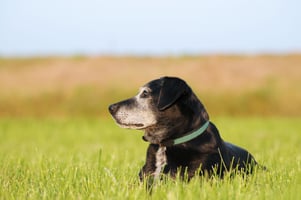As the holiday season approaches, your home is likely buzzing with excitement. The tree is going...
Understanding and Managing Fall Allergies in Dogs


As the holiday season approaches, your home is likely buzzing with excitement. The tree is going...

As the warmth of summer approaches, many of us look forward to vacations, outdoor activities, and...

When dog and cat patients suffer from allergies, it can be distressing for both pets and pet...
As the seasons shift and the air turns crisp, it’s not just humans who can experience seasonal allergies—our dogs are also at risk. Fall can bring an increase in allergens that might trigger discomfort in your furry friend. Understanding the causes, symptoms, and treatments for fall allergies in dogs can help you keep your pet happy and healthy as the weather changes.
Common Symptoms of Fall Allergies in Dogs
Just like with people, dogs can develop allergies that cause a range of uncomfortable symptoms. During the fall, you might notice your dog scratching more than usual, particularly around their paws, belly, or ears. Redness, rashes, or small scabs might appear on their skin, and chronic ear infections could become a recurring problem. Some dogs may also develop watery or red eyes, and though it’s less common, sneezing or coughing can occur. If your dog has a history of respiratory issues, such as a collapsing trachea, you might see these symptoms intensify during the fall season.
What Causes Fall Allergies in Dogs?
Allergies occur when a dog’s immune system reacts to a substance, known as an allergen, that’s usually harmless. In the fall, the most common allergens are environmental. Ragweed, for example, releases pollen in the cooler months, and this pollen can be carried by the wind over long distances. Mold is another culprit, thriving in the damp, decaying leaves that pile up during fall. Additionally, dust mites can become more prevalent when heating systems are turned on for the first time in the season, releasing these tiny particles into the air. Fleas can also remain active well into the fall, especially in milder climates, adding to the list of potential allergens.
Is It Allergies or Something Else?
While the symptoms of fall allergies can be quite distinctive, they can sometimes be mistaken for other health issues. For instance, itchy skin might also be a sign of flea allergy dermatitis or food allergies, and red eyes could indicate an infection or other eye conditions. Respiratory symptoms might be confused with infections like kennel cough. Given the range of possible causes, it’s crucial to consult your veterinarian to pinpoint the exact issue and develop an appropriate treatment plan.
Diagnosing and Treating Fall Allergies in Dogs
If your dog starts showing symptoms of allergies, a visit to the vet is essential. The vet will conduct a thorough examination, and depending on the symptoms, they might recommend skin tests, ear swabs, or even blood tests to rule out other conditions. If allergies are confirmed, your vet might suggest starting with simple treatments like over-the-counter antihistamines or medicated shampoos. In more severe cases, prescription medications, such as steroids or allergy shots, may be necessary. It’s also helpful to wipe your dog’s paws and belly after walks to remove any lingering pollen and to regularly clean their bedding to minimize dust mites.
Home Care Tips for Managing Allergies
Beyond veterinary care, there are steps you can take at home to help manage your dog’s fall allergies. Regularly bathing your dog with a gentle, hypoallergenic shampoo can soothe itchy skin and remove allergens. Vacuuming your home frequently and keeping your dog’s living area clean can reduce exposure to dust mites and other allergens. Additionally, ensuring your dog has a balanced diet and stays hydrated will support their overall health and immune system, making it easier for them to cope with seasonal changes.